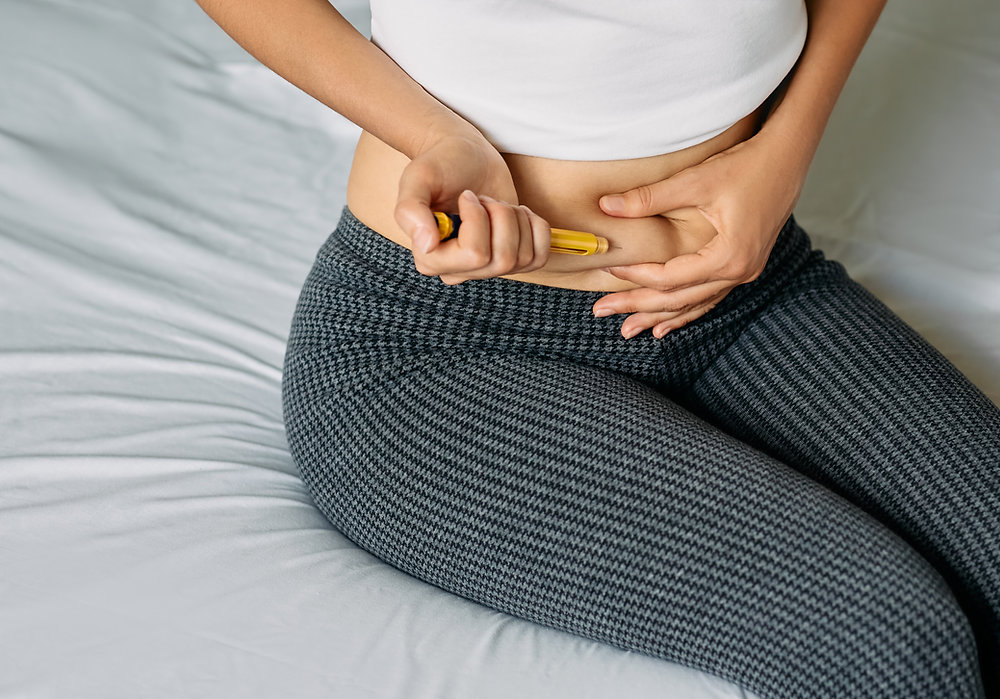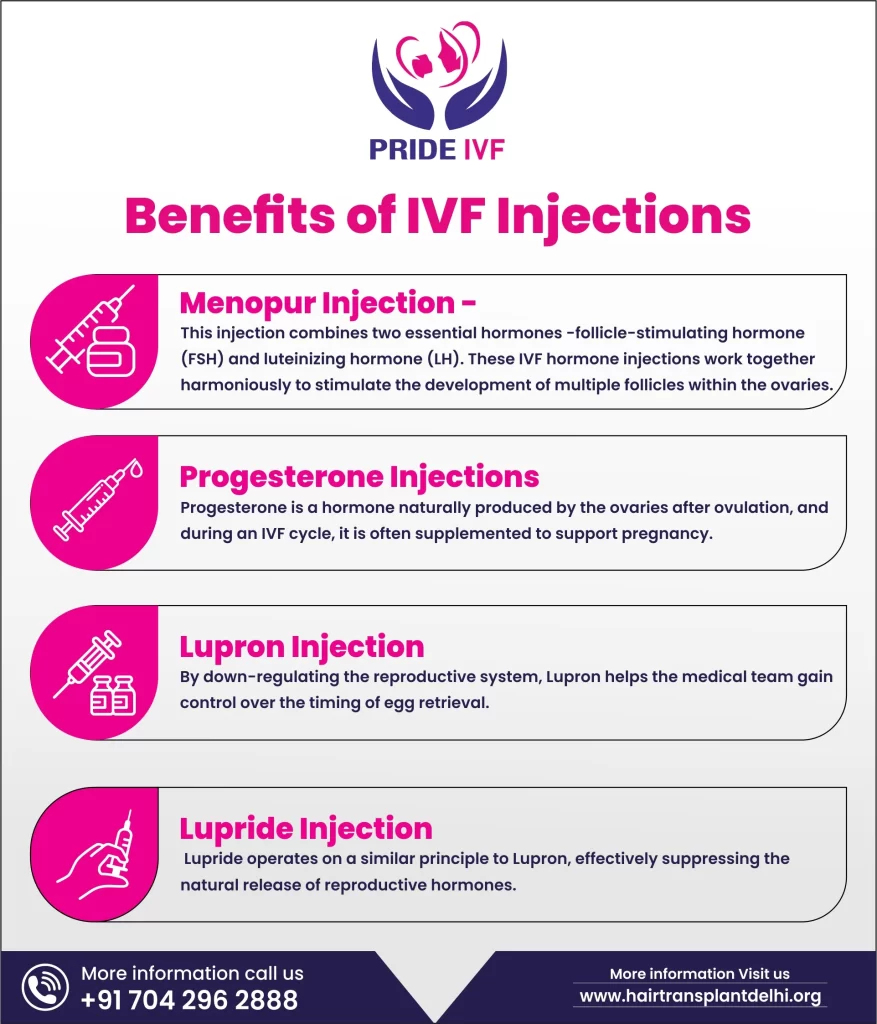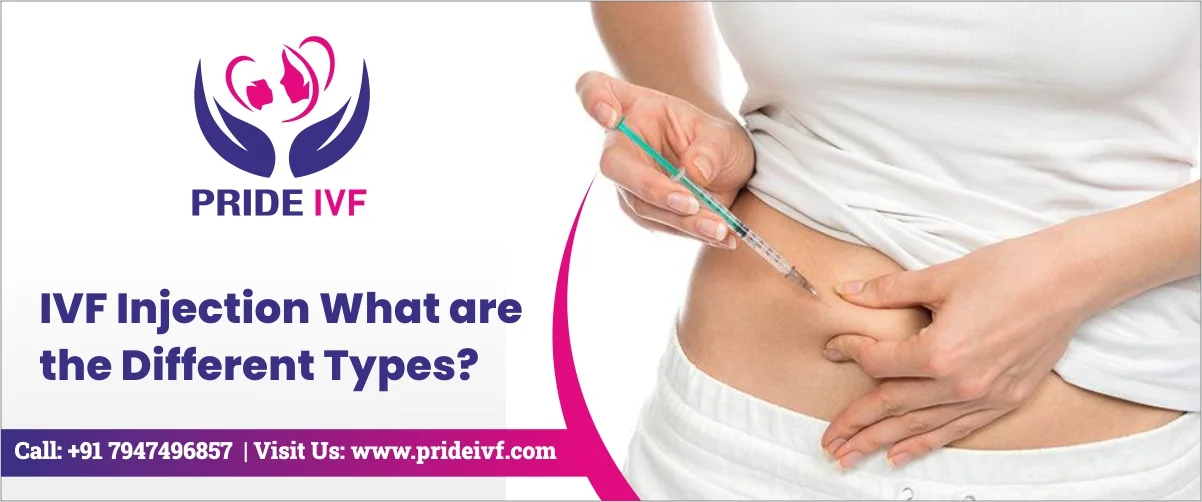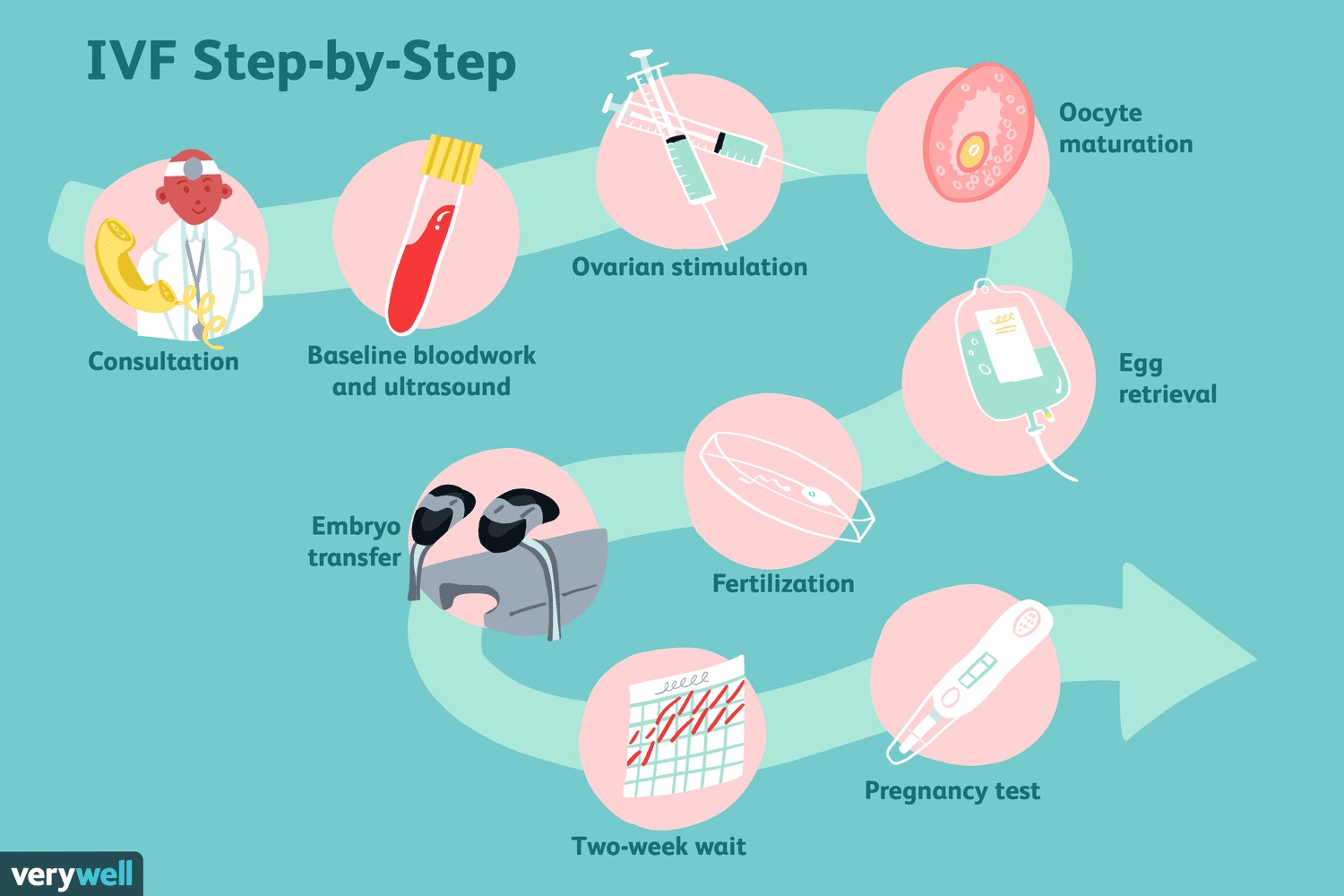What Is an IVF Injection?
If you’ve ever wondered how people start families when nature needs a little nudge, you’ve probably heard of IVF. Short for in vitro fertilization, it’s a process that’s helped millions of hopeful parents bring babies into the world. But one part of IVF that often sparks curiosity—and maybe a bit of nervousness—is the injections. What are they? Why are they needed? And what’s it really like to go through them?
IVF injections are a cornerstone of this fertility journey, and they’re not as scary as they might sound. Picture this: tiny doses of medicine that tell your body to get ready to create life. These shots are all about timing, teamwork (between you and your doctor), and a little bit of bravery. In this deep dive, we’ll unpack everything you need to know about IVF injections—how they work, what they feel like, and why they’re so important. Plus, we’ll sprinkle in some fresh insights, real-life tips, and even a quiz or two to keep things fun. Ready? Let’s get started.

Why IVF Injections Matter
IVF isn’t a one-step magic trick—it’s a carefully choreographed dance between science and your body. The injections are like the opening act, setting the stage for everything that follows. They’re used to control your hormones and boost your ovaries into action, so doctors can collect eggs to fertilize in a lab. Without these shots, your body would stick to its usual routine of producing just one egg a month—not enough for IVF to work its wonders.
The goal? To grow multiple eggs at once. More eggs mean more chances to create healthy embryos, which are the tiny beginnings of a baby. Think of it like planting a garden: the more seeds you sow, the better your odds of a bountiful harvest. But unlike gardening, this process needs precision, and that’s where the injections come in.
Doctors use these shots to:
- Kickstart egg growth: Hormones like FSH (follicle-stimulating hormone) tell your ovaries to wake up and produce multiple follicles, which are little sacs where eggs develop.
- Control the timing: Another injection, often hCG (human chorionic gonadotropin), triggers the eggs to mature and get ready for collection.
- Prevent surprises: Some shots stop your body from ovulating too soon, keeping everything on schedule.
It’s a balancing act, and the injections are the tools that make it possible. According to the American Society for Reproductive Medicine, a typical IVF cycle involves 8-14 days of these shots, depending on how your body responds. Pretty cool, right?
The Main Types of IVF Injections
Not all IVF injections are the same—they each have a special job. Here’s a rundown of the big players you’ll meet on this journey:
1. Follicle-Stimulating Hormone (FSH) Shots
These are the heavy lifters. FSH injections, like Gonal-F or Follistim, mimic the hormone your brain naturally sends to your ovaries. They encourage your ovaries to grow several follicles at once instead of the usual one. Imagine FSH as the coach yelling, “Let’s go, team!” to a bunch of sleepy eggs.
- How it’s given: Usually a small needle in your belly or thigh.
- How long: About 8-12 days, with your doctor checking your progress via ultrasound.
2. Luteinizing Hormone (LH) Boosters
Sometimes paired with FSH (in drugs like Menopur), LH helps the eggs mature. It’s like the assistant coach, fine-tuning the process so the eggs are ready to roll when the time comes.
3. GnRH Agonists or Antagonists
These shots, with names like Lupron or Cetrotide, keep your body from ovulating too early. They’re the gatekeepers, making sure the eggs stay put until the doctor’s ready to retrieve them. Without them, your body might release the eggs before the big day—talk about bad timing!
- Fun fact: Antagonists work faster than agonists, so they’re often used in shorter IVF plans.
4. The Trigger Shot (hCG or Lupron)
This is the grand finale of the injection phase. The trigger shot tells your eggs, “It’s go time!” Usually given 36 hours before egg retrieval, it mimics the natural surge of hormones that causes ovulation. It’s like flipping the switch to release those mature eggs.
- Why it’s key: Timing here is everything—too early or too late, and the eggs won’t be in peak condition.
Each shot has its moment to shine, and together, they create the perfect lineup for IVF success. Your doctor will tweak the mix based on your age, hormone levels, and how your ovaries respond.
What Does an IVF Injection Feel Like?
Okay, let’s talk about the part that might make you squirm: the needle. If you’re picturing a giant syringe and a horror-movie scream, relax—it’s not like that. Most IVF injections use tiny needles, about the size of a pin, and they go into soft spots like your stomach or thigh. Here’s the real scoop:
- The sting: It’s quick—a little pinch that lasts a second or two. Some say it feels like a mosquito bite.
- Aftermath: You might get a small red spot or slight bruising, but it fades fast.
- Comfort level: Everyone’s different. Some barely notice it; others feel a bit sore afterward.
Take it from Sarah, a 32-year-old mom who went through IVF last year: “I was terrified at first, but after the first shot, I realized it wasn’t a big deal. My husband even turned it into a game—‘Ready, aim, fire!’—and we’d laugh through it.”
Tips to Make It Easier
- ✔️ Numb the spot: Pop an ice pack on the area for a minute before the shot.
- ✔️ Distraction is your friend: Watch a funny video or chat with someone while you do it.
- ❌ Don’t rush: Take your time to relax—tense muscles make it sting more.
A 2023 study from the Journal of Assisted Reproduction found that 78% of patients rated injection pain as “mild” or “barely noticeable” after the first few days. So, while it might feel daunting at first, you’ll likely get the hang of it quick.
Step-by-Step: How IVF Injections Fit Into the Process
Wondering how these shots play out in real life? Here’s a simple breakdown of where they fit in an IVF cycle, written like a roadmap for your journey:
- Day 1 – Start of Your Cycle: Your period kicks off the process. You’ll call your clinic, and they’ll schedule your first ultrasound or blood test.
- Days 2-3 – Stimulation Begins: You start FSH injections to grow those eggs. You’ll visit the clinic every few days for monitoring—think ultrasounds and bloodwork to check hormone levels.
- Days 5-7 – Add the Gatekeeper: If needed, GnRH shots join the party to keep ovulation in check.
- Days 8-12 – Almost There: Your follicles grow (aiming for 15-20 mm each), and the doctor adjusts your doses as needed.
- Day 13 – Trigger Time: When your eggs are ready, you get the hCG shot. Egg retrieval happens 36 hours later.
- Post-Retrieval: Injections mostly stop here, though some get progesterone shots to prep the uterus for embryo transfer.
It’s a tight schedule—usually 10-14 days of shots total. Your clinic will give you a calendar, so you’re never guessing what’s next.
Side Effects: What to Expect
IVF injections tweak your hormones, so your body might throw a few curveballs. Most side effects are mild, but it’s good to know what’s normal and what’s not. Here’s the lowdown:
Common Reactions
- Bloating: Your ovaries are working overtime, so you might feel puffy.
- Mood swings: Hormones can turn you into an emotional rollercoaster—happy one minute, teary the next.
- Tiredness: Growing eggs is hard work, and you might feel wiped out.
Rare but Serious
- Ovarian Hyperstimulation Syndrome (OHSS): In about 1-5% of cases, the ovaries overreact, causing pain, swelling, or fluid buildup. Call your doctor if you gain 10 pounds fast or can’t catch your breath.
A 2024 report from the National Institutes of Health showed that mild side effects hit about 60% of IVF patients, but severe issues like OHSS are dropping thanks to better dosing techniques. Rest, hydration, and a heads-up to your doctor can keep things smooth.

Quiz Time: How Well Do You Know IVF Injections?
Let’s take a break and test your knowledge! Answer these quick questions (no pressure—answers are at the end):
- What’s the main job of FSH injections?
- A) Stop ovulation
- B) Grow multiple eggs
- C) Trigger egg release
- How long does a typical injection phase last?
- A) 2-3 days
- B) 8-14 days
- C) A month
- True or False: The trigger shot comes at the start of the cycle.
Scroll to the bottom for answers—don’t peek yet!

Fresh Insights: What’s New in IVF Injections?
The world of IVF is always evolving, and injections are no exception. Here are three cutting-edge updates that haven’t gotten enough spotlight in most articles:
1. Fewer Shots, Same Results
New long-acting FSH drugs, like Corifollitropin Alfa, can replace daily shots with one or two doses per cycle. A 2023 study in Fertility and Sterility found it cut injection days by 40% without lowering success rates. Fewer pokes? Yes, please!
2. Personalized Dosing with AI
Clinics are now using artificial intelligence to predict how your ovaries will respond to shots. By analyzing your age, hormone levels, and past cycles, AI can suggest the perfect dose. Early trials show a 15% bump in egg quality—pretty high-tech stuff!
3. At-Home Monitoring
Forget daily clinic visits—some patients are testing portable ultrasound wands that sync to an app. Paired with blood tests you mail in, this could mean fewer trips and more comfort during the injection phase. It’s still in testing, but it’s a game-changer on the horizon.
These advances show how science is making IVF injections smarter, easier, and less stressful. Who knows what’s next?
Real Talk: Handling the Emotional Side
Let’s be honest—IVF injections aren’t just physical. They can mess with your head, too. The daily routine, the waiting, the hope—it’s a lot. Here’s how to keep your spirits up:
- Team up: If you’ve got a partner, let them give the shots. It’s a bonding moment (and maybe a chance to tease them about their aim).
- Celebrate small wins: Finished your first week of shots? Treat yourself to ice cream or a movie night.
- Lean on others: Online forums or local support groups are goldmines for tips and empathy.
Jessica, a 29-year-old IVF veteran, shared: “I’d light a candle each night before my shot—it turned a chore into a ritual. Made me feel in control.” Little tricks like that can turn a tough stretch into something manageable.
Practical Tips for First-Timers
Starting IVF injections can feel overwhelming, but you’ve got this! Here’s a checklist to ace your first cycle:
✔️ Prep your space: Keep needles, alcohol wipes, and a sharps container in one spot.
✔️ Time it right: Set a daily alarm—consistency matters with these meds.
✔️ Ask questions: Not sure about a dose? Call your nurse. They’re there to help.
❌ Don’t skip monitoring: Those ultrasounds aren’t optional—they keep you safe.
❌ Avoid stress spikes: Skip the caffeine overload; it won’t help the jitters.
Pro tip: Store meds in the fridge if required, but let them warm up a bit before injecting—cold shots sting more.
Poll: What’s Your Biggest IVF Injection Worry?
We’re curious—what’s on your mind? Vote below and see what others think! (Check back in a week for results on our site.)
- A) The pain of the needle
- B) Side effects like bloating
- C) Getting the timing perfect
- D) The emotional ups and downs
Drop your pick in the comments or imagine circling it on your screen—your voice counts!
Busting Myths About IVF Injections
There’s a lot of noise out there about IVF shots. Let’s clear up some common misconceptions with facts:
- Myth: “Injections hurt like crazy.”
- Truth: Most people say it’s a minor pinch. A 2022 survey by Resolve found 85% were surprised it wasn’t worse.
- Myth: “More shots mean better results.”
- Truth: It’s about quality, not quantity. Overdoing it can backfire with OHSS.
- Myth: “You’ll gain tons of weight.”
- Truth: Bloating’s temporary—any gain (usually 2-5 pounds) drops after the cycle.
Knowledge is power, and knowing what’s real helps you feel ready.
The Science Behind the Shots
Want to geek out a bit? Here’s how IVF injections work on a cellular level, explained simply:
Your ovaries are like a factory with a monthly quota—one egg. FSH shots crank up production, telling follicles to grow fast. Each follicle is a bubble holding an egg, and ultrasound tracks their size (aiming for 15-20 mm). The trigger shot then bursts those bubbles, releasing eggs for retrieval. It’s biology meets engineering—pretty mind-blowing when you think about it.
A 2024 study from the Endocrine Society found that tweaking FSH doses based on AMH (anti-Müllerian hormone) levels—a marker of egg reserve—boosted egg yield by 20% in women over 35. Science keeps finding ways to make this smoother.
Unique Angle: The Partner’s Role in IVF Injections
Most articles focus on the person getting the shots, but what about the partner? They’re not just cheerleaders—they can be hands-on helpers. Here’s how they fit in:
- Shot giver: Many partners learn to inject, turning it into a team effort.
- Mood lifter: A bad day? They’re there with a hug or a silly dance.
- Logistics pro: They can track appointments or pick up meds.
Mike, a 34-year-old dad-to-be, said: “Giving my wife her shots made me feel useful. I’d draw little smiley faces on the Band-Aids after.” It’s a small act, but it builds a stronger bond during a wild ride.
Looking Ahead: What’s Next After Injections?
Once the shots are done, the action shifts. Egg retrieval is a quick procedure (20-30 minutes under sedation), then the lab fertilizes the eggs with sperm. A few days later, an embryo goes into the uterus. No more needles—well, maybe progesterone shots for some, but that’s another story.
Success rates vary: the CDC says women under 35 have a 50%+ chance of a live birth per cycle, dropping with age. But every step, including those injections, gets you closer.

Wrapping It Up
IVF injections might sound intimidating, but they’re a powerful tool in the quest for a baby. They’re not just needles—they’re hope in liquid form, guiding your body through a process that’s part science, part miracle. From growing eggs to timing the perfect release, these shots are the unsung heroes of IVF.
You’ve got the facts now: how they work, what to expect, and even some fresh tricks to make it easier. Whether you’re about to start or just curious, you’re armed with knowledge—and maybe a little excitement, too. So, take a deep breath, grab that ice pack, and know you’re not alone on this journey.
Quiz Answers
- B) Grow multiple eggs
- B) 8-14 days
- False—it’s near the end, before retrieval.
How’d you do? Let us know!


